June 21, 2025 | 03:52 GMT +7
June 21, 2025 | 03:52 GMT +7
Hotline: 0913.378.918
June 21, 2025 | 03:52 GMT +7
Hotline: 0913.378.918

Da Do irrigation system in An Lao district (Hai Phong). Photo: Dinh Muoi.
Da Do irrigation system has the characteristics of coastal tidal zone irrigation, the operation of the system depends on the tidal regime, the rainfall in the basin, the salinity of the input water in the Van Uc and Lach Tray rivers and flow coming from upstream.
According to Da Do Exploiting Irrigation One Member Company Limited (Da Do Company), in the past at Van Uc River, saline intrusion always fluctuated around the value 26‰ within a distance of 0 - 20km from the riverfront. At Lach Tray River in Kien An area, the average salinity is 0.58‰. In the Trung Trang area, the average salinity reaches 0.11‰, this value is quite suitable for taking water into the production system.
In the past 5 years, salinity has penetrated deeper, for a longer time and with higher salinity concentrations. For example, in the year 2019 - 2020, on the Van Uc slope, saltwater penetrated to Trung Trang sluice. There are times when the salinity is up to 5.1‰. It is very difficult to get water into the sluice system, sometimes it only takes 1 - 2 hours. There are days when it is impossible to get water due to high salt water covering the system, while in the past, it was possible to take advantage of 7 - 8 hours/period of water.
With such a salinity concentration, the prolonged appearance of salinity makes the water in the system unable to be reversed through the horizontal sluices. The risk of salinity infiltration into the system greatly affects the quality of the water source.
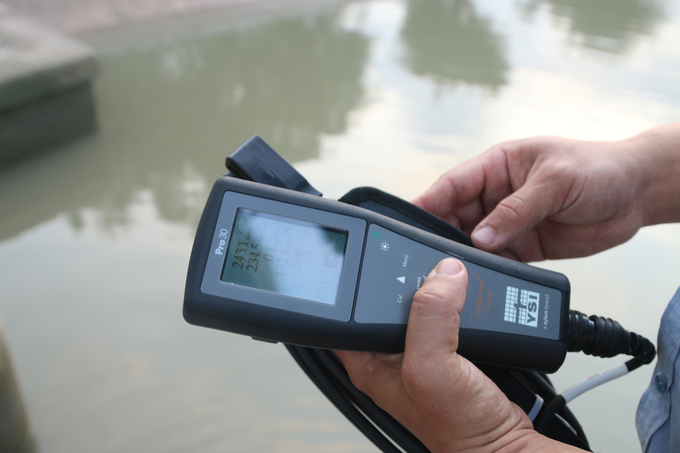
Saltwater intrusion is getting deeper and deeper, affecting the water input to the irrigation system. Photo: Dinh Muoi.
It is very difficult to get water into the system during the annual crop for agricultural production. At times, Trung Trang sluice, Quang Hung culvert, and Bat Trang culvert could not get water according to the plan, but only made use of it hourly.
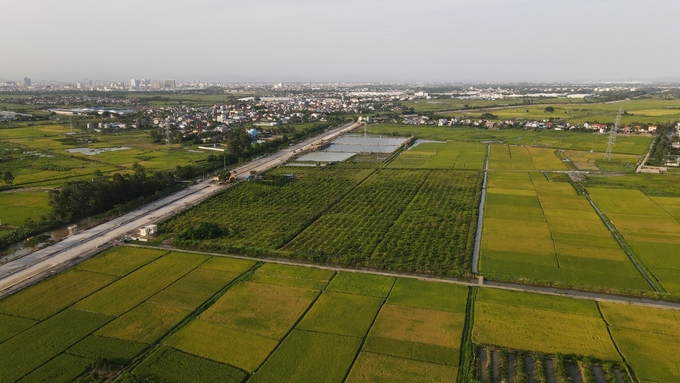
Saltwater intrusion into the two dykes of Van Uc and Lach Tray rivers is threatening the water source for 32,000 ha of agricultural land in Hai Phong. Photo: Dinh Muoi.
"From the actual observation using the above data, the salinity has an inverse relationship with the upstream flow factors and is directly proportional to the influencing factors from the tidal level. Prior to climate change, and rising sea levels, factors from upstream are at risk of decline due to reduced rainfall, pollution of upstream water sources, and uneven distribution to the downstream of rivers combined with rising global temperatures. Rising sea level will make the trend of salinity increasingly encroach on the river and with increasing salinity level," Mr Do Van Trai - Chairman of Da Do Company said.
Da Do irrigation system belongs downstream of the Red River - Thai Binh system, located in the southwest of Hai Phong city, surrounded by two banks of Van Uc and Lach Tray rivers, sea dikes I and II.
Every year, in addition to serving raw water, the system is responsible for supplying irrigation water for agricultural production, aquaculture, prevention of floods, droughts, saltwater intrusion, and economic development to serve 5 districts, including An Lao, Kien Thuy, Kien An, Duong Kinh and Do Son districts with a total area for agricultural production of over 32,000 ha/year.
According to Da Do Company, the water source into the Da Do irrigation system is mainly taken through Trung Trang sluice and some upstream sluices.
Currently, due to the effects of climate change, in recent years, Water collection in the dry season from November to April next year faces many difficulties, especially in the face of climate change, rising sea levels, salinity intrusion is increasingly threatening to encroach into Van Uc and Lach Tray rivers with longer cycles and higher salinity concentrations.

Officers of Da Do Company checked the automatic monitoring system to prepare for the new production season. Photo: Dinh Muoi.
When the quality of the input water source is acceptable in terms of salinity and quality, it is necessary to make the most of it, increase water storage in the system, and prevent drought and water shortage to ensure production.
In the rainy season, the collection of water, water change to clean the water source in the system, and drainage for flood and storm prevention are carried out in accordance with the operating process, which is basically convenient for production work.
In the dry season, water intake is affected by tides, saline intrusion penetrates deeply into 2 slopes of Van Uc and Lach Tray, and the water level is low upstream. The sluice gates under the dike are closed to prevent and control saline intrusion.
In water drainage, in the dry season, due to the influence of tides, high saline water penetrates into the system, and the work of salt washing and cleaning must be done regularly.
If in the past, the water source was mainly for agriculture, the salinity required for water supply < 1‰, now salinity is required to be less than 0.25‰ to ensure water supply for industries, combined with climate change. As a result, it is more difficult to get water into the system.

The demand for water for production is increasing day by day. Photo: Dinh Muoi.
In agriculture, the agricultural economic structure has shifted towards increasing the proportion of livestock and fishery industries; reducing the share of crop production. High technologies are gradually applied in agricultural production. Therefore, the demand for water sources is higher in both quantity and quality than in the previous period.
Mr. Nguyen Trung Kien - General Director of Da Do Company said that the cause of the above situation is due to low rainfall and reduced upstream flow, low water level, while the system depends on the flow from upstream of the Thai Binh river system.
In addition, the upstream flow declines over time due to a decrease in rainfall in the basin, on the other hand, rising sea level rise during the rising tide period increases the reverse flow.
The interaction of these two flows leads to changes in flow patterns, changes in water level and salinity on the two banks of Van Uc and Lach Tray rivers directly affecting the operation and regulation of the system water source.
"In recent years, the effects of climate change, rising sea level, and saltwater intrusion into the two dikes of Van Uc and Lach Tray rivers have affected the irrigation system. At times, the intake of water into the system is carried out according to the process, the plan to retrieve water is not guaranteed, achieving only 30% of the plan. The work of pickling, salting, and cleaning the water source in the system could not be done, salt water penetrated through the two slopes of Van Uc and Lach Tray dikes into the system," said Mr. Kien.
Da Do irrigation system includes Da main river with a length of 48.6 km, originating from the Trung Trang cluster of irrigation works (32 m-wide gate, flow rate of 111 m3/s), at the end of the source is Co Tieu II and III sewerage work cluster (56 m-wide gate, flow rate of 176 m3/s); 456 km channel level 1, level 2 inter-commune ward; 151 electric pumping stations; 130.5 km of irrigation canal behind the electric pumping station; 73 sluices under sea dikes I, II, Van Uc and Lach Tray dikes; 594 regulating sluice gates on the canal.
The intake of water into the Da Do irrigation system must ensure the regular maintenance of the water level in the Da Do irrigation system from (+0.85 m ÷ +0.95 m) and the water source must ensure quality, salinity is within the allowable range ≤ 0.25‰.
Translated by Hoang Duy
![Turning wind and rain into action: [10] Advancing accessible climate services for farmers](https://t.ex-cdn.com/nongnghiepmoitruong.vn/608w/files/linhnhp/2025/06/20/1911-z6704423696987_15fd32ffc26d590d204d520c9dac6786-nongnghiep-161854.jpg)
(VAN) Not only does it help farmers 'avoid droughts and rains,' the development of agricultural climate services also enhances their ability to proactively adapt to a rapidly changing climate.
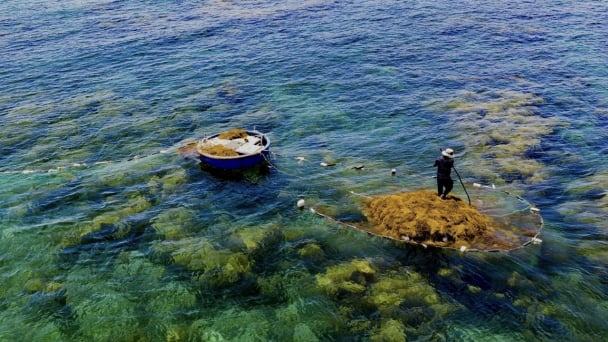
(VAN) With international assistance, the harvesting of sargassum seaweed in Quang Ngai has become increasingly regulated, thereby safeguarding marine life and ensuring the stability of coastal communities' livelihoods.
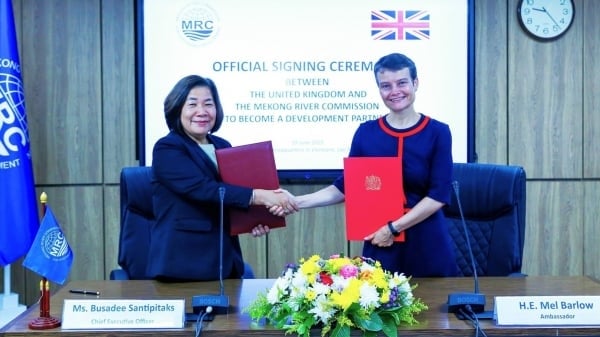
(VAN) On June 19, the United Kingdom officially became a Development Partner of the Mekong River Commission.
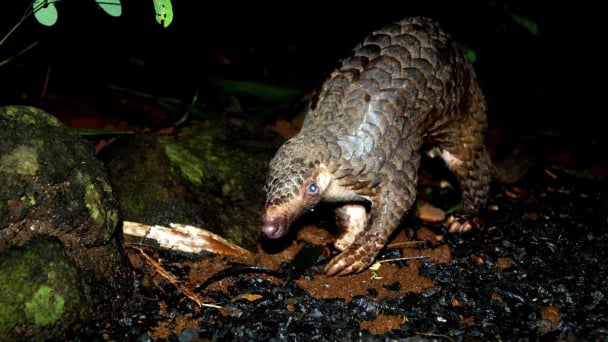
(VAN) Biodiversity is being threatened by traditional remedies made from wildlife. Traditional medicine and humans must change to live in harmony with nature.
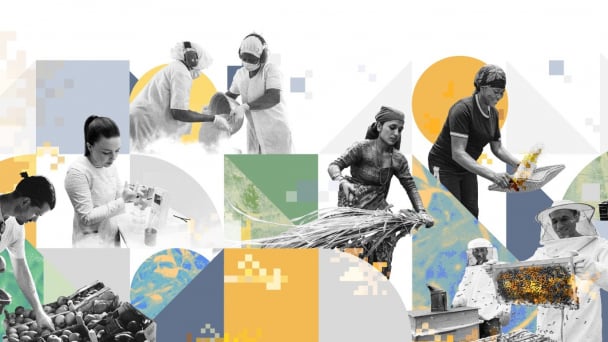
(VAN) Agrifood investment and finance solutions for people and the planet.
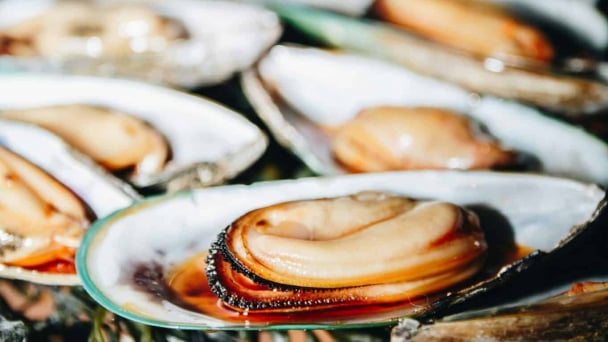
(VAN) Microplastic contamination has become pervasive in seafood, posing unprecedented challenges for food safety and marine ecosystems.
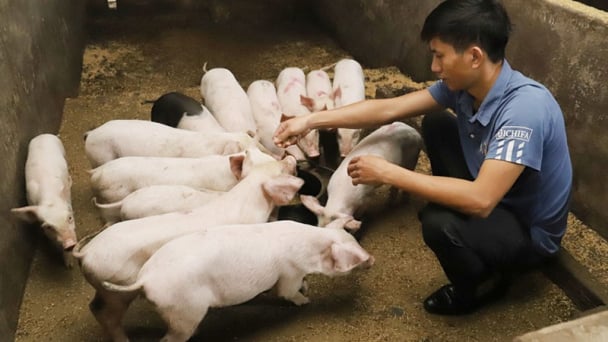
(VAN) Proactively using vaccines, combined with transport control and enhanced surveillance, is the only viable path toward biosecure and sustainable livestock production in Vietnam.